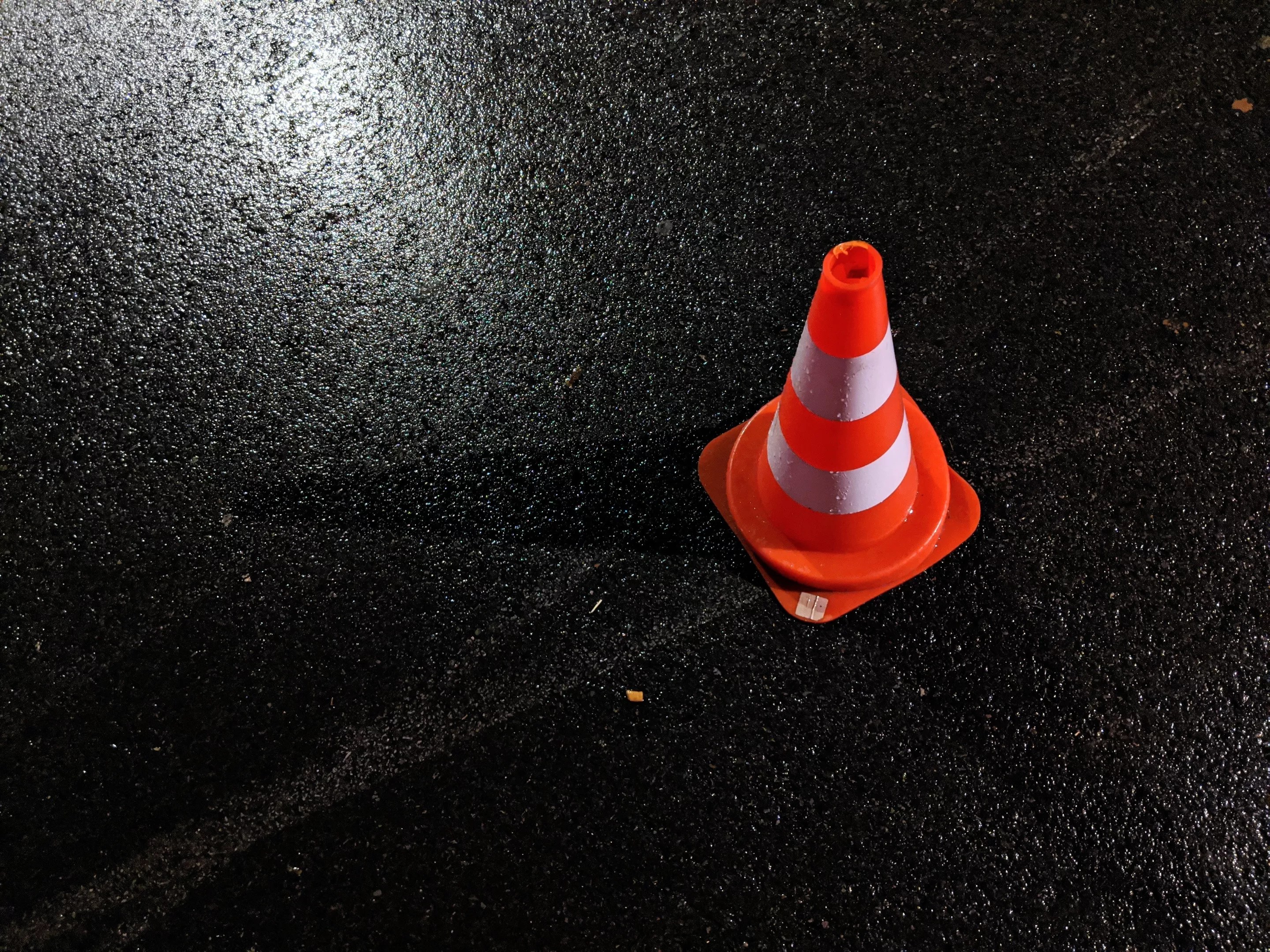
Photo by Lucian Alexe on Unsplash

Audio By Carbonatix
For many Dallas residents, the city is No. 1 in realms like music and food. But Big D also recently claimed the top spot in a less enviable category: the list of the 10 most dangerous cities for driving in the U.S.
To learn how to make the roads safer for his constituents, City Council member Chad West asked city staff to conduct a traffic island demonstration in the Winnetka Heights historic district. The results of the study are in, and they look pretty promising.
District 1’s West described traffic calming as a “passion” of his in an email to the Observer. Later by phone, he broke down the findings of the demonstration, which aimed to address speeding on Edgefield Avenue.
West noticed during a trip to Portland that there were a lot of traffic islands, and Denton has them “all over the place,” too. So, he asked staff to put together a demo project to consider them as a possible solution to the speeding problem.
When news happens, Dallas Observer is there —
Your support strengthens our coverage.
We’re aiming to raise $30,000 by December 31, so we can continue covering what matters most to you. If the Dallas Observer matters to you, please take action and contribute today, so when news happens, our reporters can be there.
“Some neighbors were skeptical, but everybody was on board with at least trying it as a demonstration,” he said.
The average car speed dropped from 25 mph to 23 mph, according to the study. But even though the velocity hasn’t significantly improved, the total number of speeders was slashed from around 16% to 9.5%.
West said the demonstration has lasted a few months, and that neighbors will be consulted as to whether they’d like to make the neighborhood traffic island permanent. To his understanding, it’s the first demo of such an island in the entire city.
Many people started working from home after the coronavirus pandemic hit, West said, and they began to realize just how unsafe the roads are throughout the workday. He’d heard from constituents who said it didn’t feel safe for their kids to ride bikes on the road, or for joggers to run.
Another hurdle: Edgefield Avenue is a public safety emergency route, meaning that it can’t contain traditional speed bumps, because they would hinder response time for firetrucks, he said.
“It’s incumbent on us to help where we can as civilians. One way we can do that is by putting in traffic calming measures where they make sense, and we’re doing that.” – City Council member Chad West
The demonstration has resulted in primarily positive feedback from neighbors, West added. One concern, though, is that a traffic island would reduce street parking for those who live closest to it.
West personally likes the island: As a driver, he can continue moving without having to come to a complete stop. And as a runner, he feels as though drivers pay closer attention while navigating the island than they would without – or even with – stop signs.
Plus, he said, traffic islands are relatively inexpensive and pretty unique. Although costlier, another idea for the future would be to introduce “slightly more decorative crosswalks” in different colors.
Dallas resident Jordan Gooch, who lives on the corner of Edgefield and Ninth Street, thinks a traffic island is likely a good idea for that intersection. He told the Observer earlier this month that many drivers have slowed down at the temporary island because it’s a physical obstruction in the road. He thinks it’s probably better than having stop signs, which some cars just choose to ignore.
Before the traffic island, there wasn’t anything to slow down drivers on Edgefield for several blocks, Gooch said. It concerns him when cars zoom by at 30 mph, particularly given that he has a young son.
“I wouldn’t feel good about him riding his bike or playing with a ball in the front yard, because without something slowing people down, people just go as fast as they want,” he said.
Gooch has noticed that the vast majority of drivers slow down for the island. Still, he’s seen some people drive right over the island’s center, so he hopes a permanent installation would feature larger speed bumps so people can’t cut through.
Gooch has also heard complaints of a reduction in street parking and an increase in honking, too.
The traffic circle solution may be imperfect, but Gooch believes that “it’ll work really well.”
“We were kind of the guinea pigs for implementing these all over the city,” he said. “So, yeah, I hope they get it figured out and make it to where it works out better.”
On Friday afternoon, Gooch provided an update: Speeding over 40 mph was found to have spiked from two to six cars on one particular day, although that may have been a fluke. He also mentioned a neighbors meeting planned for Sunday, during which a survey may gauge what residents would like to see done with the traffic circle.
Dallas saw a major street-racing problem during the height of the pandemic, West noted, adding that it’s far less of an issue today. But speeding on neighborhood streets hasn’t changed that much.
“It’s important for us to realize that police can’t patrol everywhere. They’ve got limited resources and a whole lot of needs pulling them in different directions,” he said. “It’s incumbent on us to help where we can as civilians. One way we can do that is by putting in traffic calming measures where they make sense, and we’re doing that.”